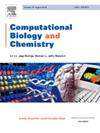Interpretable lung cancer risk prediction using ensemble learning and XAI based on lifestyle and demographic data
IF 2.6
4区 生物学
Q2 BIOLOGY
引用次数: 0
Abstract
Lung cancer is a leading cause of cancer-related death worldwide. The early and accurate detection of lung cancer is crucial for improving patient outcomes. Traditional predictive models often lack the accuracy and interpretability required in clinical settings. This study aims to enhance lung cancer prediction accuracy using ensemble learning methods while integrating explainable AI (XAI) techniques to ensure model interpretability. Advanced ensemble learning techniques, such as Voting and Stacking, have been implemented to improve the predictive accuracy compared to traditional models. The models are implemented on three real lung cancer datasets, comprising lifestyle data of the patients, and assessed using various performance metrics, highlighting their reliability in clinical diagnosis. XAI methods are incorporated to ensure the models are interpretable, fostering trust among clinicians. SHAP (SHapley Additive exPlanations) values are utilized to identify and prioritize clinical and demographic factors influencing risk predictions. The ensemble models demonstrate superior performance metrics, significantly improving lung cancer prediction accuracy. Specifically, the Stacking ensemble model achieves the average prediction accuracy of 99.59 %, precision of 100 %, recall of 97.64 %, F1-score 98.65 %, AUC of 100 %, Kappa 98.40 %, and MCC of 98.44 % across three datasets. We employed the Friedman aligned ranks test and Holm post hoc analysis to validate performance, showing that the Stacking ensemble consistently outperformed others with higher accuracy and reliable predictions. Feature importance analysis reveals critical risk factors, providing insights into their interconnectivity and enhancing risk assessment frameworks. Integrating XAI techniques ensures the models are interpretable, promoting their potential adoption in clinical practices. The findings support the development of targeted interventions and effective risk management strategies, aiming to improve patient outcomes in lung cancer diagnosis and treatment.
求助全文
约1分钟内获得全文
求助全文
来源期刊

Computational Biology and Chemistry
生物-计算机:跨学科应用
CiteScore
6.10
自引率
3.20%
发文量
142
审稿时长
24 days
期刊介绍:
Computational Biology and Chemistry publishes original research papers and review articles in all areas of computational life sciences. High quality research contributions with a major computational component in the areas of nucleic acid and protein sequence research, molecular evolution, molecular genetics (functional genomics and proteomics), theory and practice of either biology-specific or chemical-biology-specific modeling, and structural biology of nucleic acids and proteins are particularly welcome. Exceptionally high quality research work in bioinformatics, systems biology, ecology, computational pharmacology, metabolism, biomedical engineering, epidemiology, and statistical genetics will also be considered.
Given their inherent uncertainty, protein modeling and molecular docking studies should be thoroughly validated. In the absence of experimental results for validation, the use of molecular dynamics simulations along with detailed free energy calculations, for example, should be used as complementary techniques to support the major conclusions. Submissions of premature modeling exercises without additional biological insights will not be considered.
Review articles will generally be commissioned by the editors and should not be submitted to the journal without explicit invitation. However prospective authors are welcome to send a brief (one to three pages) synopsis, which will be evaluated by the editors.
 求助内容:
求助内容: 应助结果提醒方式:
应助结果提醒方式:


